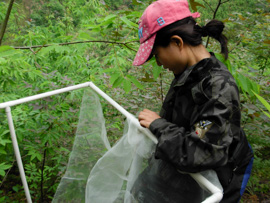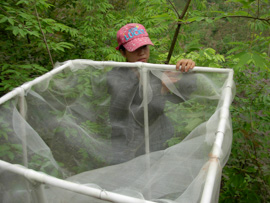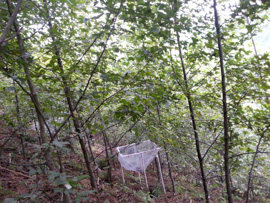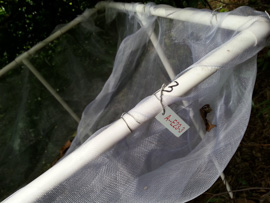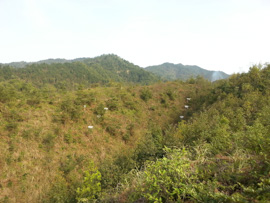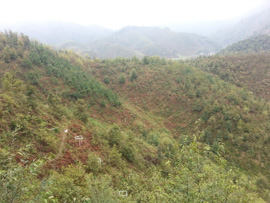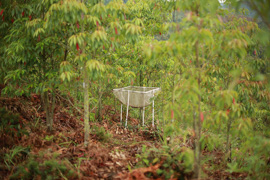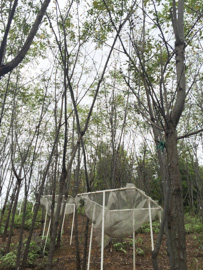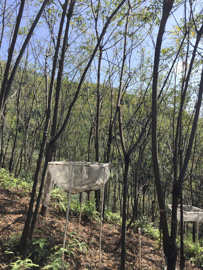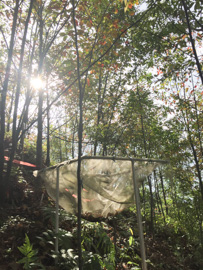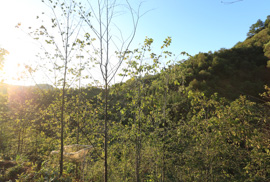Methods
We installed 3 litter traps in the central area of each plot in March 2014 at site A (trees were planted in 2009) and in March 2015 at site B (trees were planted in 2010). Litter traps were made of nylon nets (1 mm mesh) placed over a PVC frame with a horizontal trapping area of 0.75 × 0.75 m. The litter traps were placed under the tree canopy 1–1.5 m above ground level, depending on the size of the trees. Plots with a maximum tree height below 1 m were not equipped with traps because these would not have collected significant amounts of leaf litter (There are 19 plots as showed with grey crosses in the figure). At sites A and B, 56 and 45 plots were fitted with traps, respectively. Thus, in total there were 101 plots on which we installed litter traps. In site B, two Meliosma flexuosa monocultures, one Machilus grijsii plot and one Quercus phillyreoides plot could not be established in the beginning, so they were excluded from analysis.
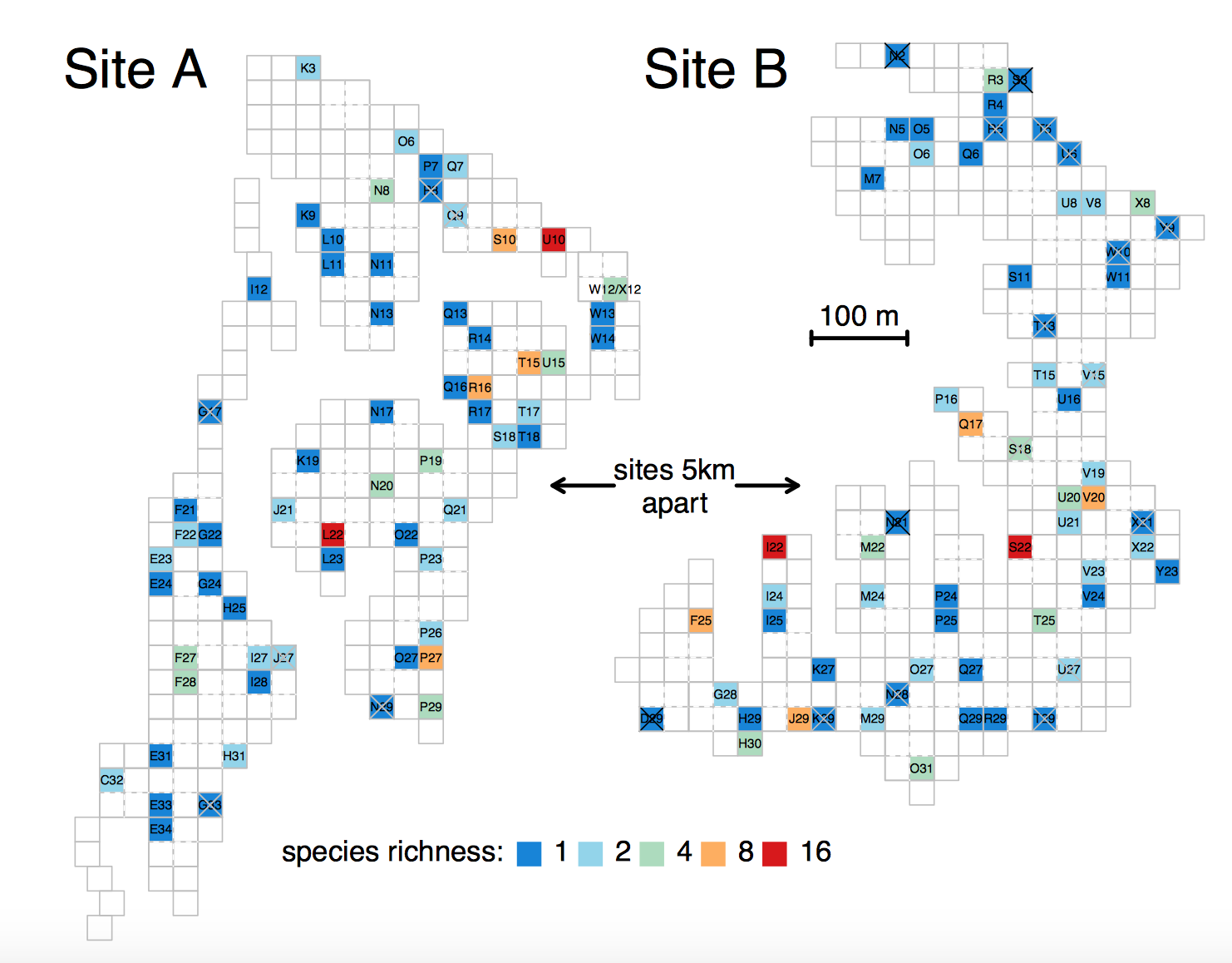 Figure1. Map of study area and experimental plots. Each square represents a plot. Left map shows experimental site location –– Xingangshan (the red point) in Jiangxi province (the green area). The right part shows information about the experimental plots. Colored plots were chosen to install litter traps. In each site, those plots are from one species pool with a complete tree species richness gradient of 1, 2, 4, 8, 16 species. Four plots in site B with black crosses failed to establish; these were excluded from the analysis. Trees in plots with grey crosses were not tall enough to install litter traps. Empty plots belong to the overall BEF-China experiment but were not used in this study.
Figure1. Map of study area and experimental plots. Each square represents a plot. Left map shows experimental site location –– Xingangshan (the red point) in Jiangxi province (the green area). The right part shows information about the experimental plots. Colored plots were chosen to install litter traps. In each site, those plots are from one species pool with a complete tree species richness gradient of 1, 2, 4, 8, 16 species. Four plots in site B with black crosses failed to establish; these were excluded from the analysis. Trees in plots with grey crosses were not tall enough to install litter traps. Empty plots belong to the overall BEF-China experiment but were not used in this study.
